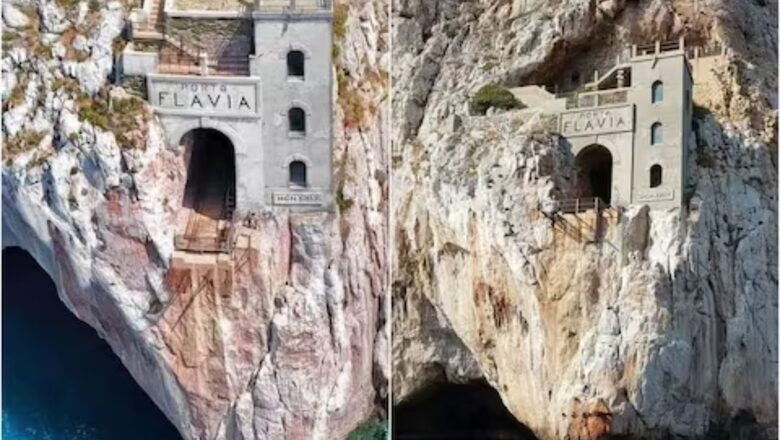
views
In the Southwest coast of Sardinia, Italy, lies Porto Flavia, a remarkable feat of civil engineering. This unique seaport, hanging from a cliff, serves as more than just a structure; it stands as a genuine testament to human ingenuity from the 1920s. With a mere two-hour flight from Spain, one can reach the charming inlet of Masua. It is nestled in the municipality of Iglesias and embraced by beaches. Here, a 600-metre tunnel opens to the sea, serving as both the escape route for a mine and a functional port. Constructed between 1923 and 1924 by the forward-thinking engineer Cesare Vecelli, Porto Flavia aimed to streamline the export of various minerals, such as coal, barium, zinc, sulphur, lead, and silver, utilising an innovative mobile arm for direct transfer from mine to ships at the mouth.
During the 19th and 20th centuries, Sardinia experienced a thriving period of mining, particularly focused on coal. In the town of Iglesias, home to Porto Flavia, remnants of that era endure in the form of preserved tunnels, wells, and laundries. The industrial history of the region is palpable. Porto Flavia serves as a tangible monument to that bygone era.
Conceived by Cesare Vecelli, Porto Flavia is not just utilitarian but also possesses aesthetic charm. Vecelli envisioned constructing the port directly on the cliff’s wall, linking it to the summit through intricate tunnels. The name Porto Flavia holds significance, paying homage to the engineer’s daughter, Flavia, infusing a personal and touching element into the structure.
Post-World War II, mineral extraction at Porto Flavia dwindled significantly. In the 1990s, the mine ceased operations, signalling the conclusion of an industrial era.
Engineer Vecelli crafted two interlocking tunnels, each spanning about 600 metres and connected by nine vertical shafts. The transportation of minerals was efficiently managed by an electric train, depositing its cargo through cleverly designed hatches into the tanks. What we encounter here is a splendid feat of engineering suspended amidst air and water.
For an immersive journey into the history and uniqueness of Porto Flavia, guided tours are available at a cost of 10 euros per person. This allows you to explore the tunnels that once facilitated the transportation of minerals by trains, offering a firsthand experience of the efficient conveyor belt system that is sure to leave you amazed.


















Comments
0 comment